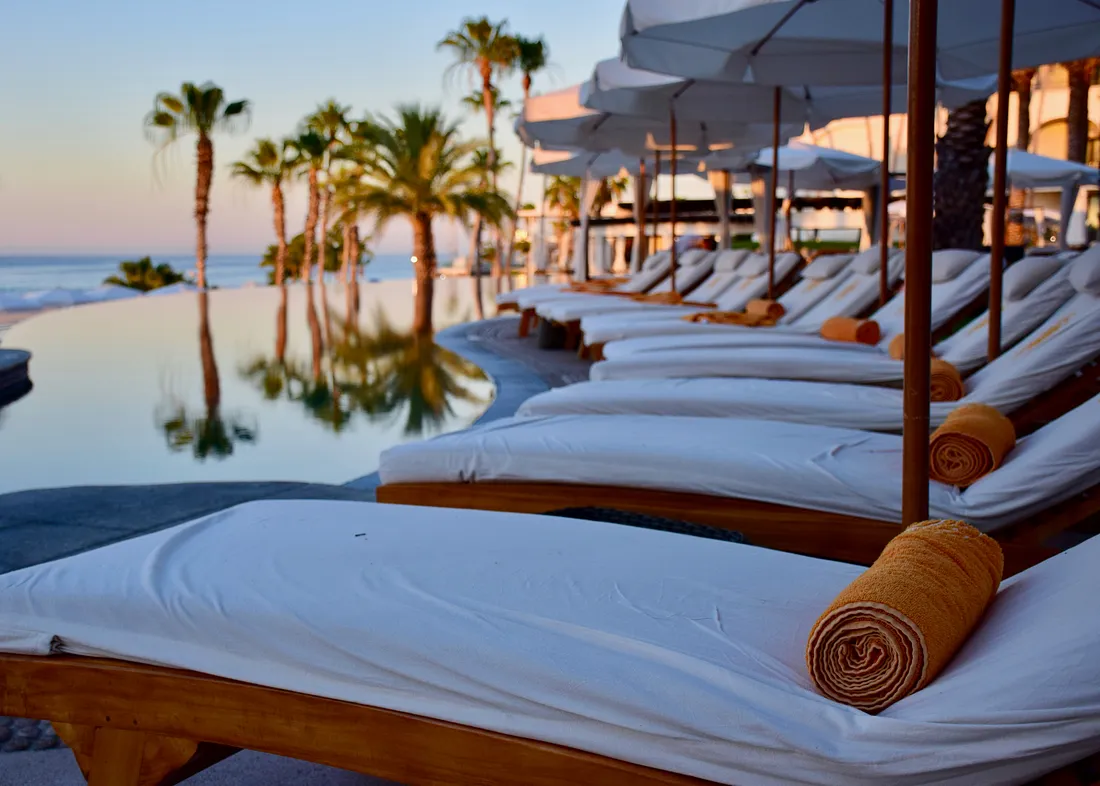Local cuisine: The importance of valuing local products and regional cuisine in a globalized world
In an increasingly interconnected world, where food travels thousands of kilometers to reach our plates, it is essential to remember the importance of local cuisine. This culinary practice is based on using local ingredients and respecting the traditions of each region, generating benefits for both our health and the local economy. With that said, in this article, I would like to explore why it is vital to value local products and how regional cuisine can enrich our gastronomic experiences. Imagine savoring a juicy tomato freshly harvested from the nearby garden, with its authentic flavor and unmatched freshness. Now compare that to an imported tomato, which had to be picked prematurely to withstand long journeys and loses some of its flavor along the way. The difference is palpable. By consuming local food, we not only enjoy more intense and authentic flavors, but also obtain more nutritious and healthier products. Local cuisine is also crucial support for the economy, as choosing local products contributes to the sustainable development of our community, creating employment opportunities, and promoting the preservation of regional culinary traditions. A concrete example of the importance of valuing local products is Manchego cheese, a Spanish gastronomic gem recognized internationally. Made from milk from
The transformative power of Artificial Intelligence in tourism
In the digital age, Artificial Intelligence (AI) has left a significant mark on various sectors, and tourism is no exception. In particular, accommodation platforms like Airbnb have harnessed the power of AI to revolutionize the way people book and enjoy their travel experiences. But, do you know how this innovative tool is contributing to the development of tourism today? Personalized recommendations. One of the greatest benefits of AI in tourism is its ability to provide personalized recommendations, and that is that platforms such as Airbnb or Vico use AI algorithms to analyze data such as preferences, travel history, and user search patterns, capable of to offer accommodation options and tourist experiences adapted to the interests and needs of each traveler. Improvement in price management. By analyzing supply and demand in real time, AI systems adjust prices based on market availability and demand. This allows for greater flexibility and price competitiveness, ensuring that travelers get fair fares and providers maximize their revenue. Automated customer service. Through chatbots and virtual assistants, AI provides quick and accurate responses to traveler inquiries and requests, as these automated systems can provide booking information, fix common issues, and offer recommendations, thus enhancing the customer experience with efficient answers and available
How younger generations are reshaping luxury travel
As I recently shared, luxury travel is back in a big way. And while there are a number of factors for this boom, I want to focus on one that may surprise you: the influence of millennials and Gen-Z. As consumers, these generations are often seen as more conscious and informed than those that came before them, making it difficult to predict how they would wield their eventual buying power. But they are now making themselves abundantly clear: 79 percent agree that travel is an important budget priority. Let’s dig into why. Cash flow. During the pandemic, many young people took the opportunity to pay down debts and save on rent by living with family members. At the same time, while previous generations were more likely to become homeowners in their 20s and 30s, a number of economic factors are keeping many millennials and Gen-Zers out of the housing market. This group is also marrying and having children later, if at all. In short: they have money to burn and less financial responsibilities to hold them back. And, after years of staying close to home, they are looking to use their financial freedom to make up for lost time–whether it be paying for travel upgrades, choosing hotels with higher-end amenities, or crossing dream
Investment in community tourism: a way to support the sustainable development of local communities
At present, community tourism has become an attractive form of investment for many investors. By investing in community-based tourism, investors not only have the opportunity to earn financial gain, but also to have a positive impact on society and the environment. This type of activity focuses on promoting the economic and social development of local communities through sustainable and responsible tourism, through the inclusion of local communities in the development of sustainable tourism activities and projects. One of the most common ways to invest in it is through the purchase of tourist properties. This includes the acquisition of hotels, guest houses, restaurants and other tourist establishments. In this sense, local communities are the main beneficiaries of the tourist activity, since they are given the opportunity to develop and offer unique tourist products, such as nature tours, craft workshops, traditional foods, among others, which allow the visitor to experience the local culture in an authentic and genuine way. In conclusion, community tourism is a tourism alternative that seeks to promote sustainable and responsible development of local communities, while providing an authentic and enriching experience to travelers. In this way, a conscious travel style is encouraged that supports both local communities and the preservation of the
Straight up: Spirit sales rise over beer
Americans love beer. In 2021, 187 million barrels of beer were consumed, making it a $100 billion market. So it might be shocking to learn that for the first time, distilled spirits surpassed beer in sales in 2022–with spirit sales at 42.1 percent of the alcoholic beverage market share and beer at 41.9 percent. While this news marks a new turn in the beverage industry, it may not be surprising to those who’ve followed consumer trends in the last decade. Distilled spirits have steadily grown in popularity, gaining market share for 13 years until becoming America’s beverage of choice in 2022. Not only is this great for the country’s liquor companies and retailers, but it’s also welcomed news for the hospitality industry. On-premise spirit sales are still 5 percent below where they were pre-pandemic. However sales are trending upward–a good, albeit slow, sign of recovery for the hospitality industry. How spirits surpassed beer Americans spending more on drinks while they dine out isn’t the only trend driving sales. The market also got a boost from the current cocktail wave sweeping the nation, such as the espresso martini revival. High-end spirits also helped grow the market. Premium sales accounted for more than 60 percent of the sector’s revenue last year, according to the
Round trip: Is business travel back?
Last year, I wrote about the airline industry revamping the business class experience. From new seating to destination-inspired menus, all signs pointed to the sector betting on work travel for its COVID-19 pandemic recovery. While it looks like their bet has paid off, travel and hospitality insiders should keep an eye on possible turbulence ahead. Business travel rebounds When travel restrictions and remote work grounded business travel, many wondered if it would ever return to previous levels. Last year, business travel was almost two-thirds of where it was before the pandemic. This year, 32 percent of people plan to travel for work, compared to the 16 percent who planned to travel last year. Even the majority of remote workers plan on traveling for their jobs this year. So, what’s driving the business travel revival? Surprisingly, smaller businesses reported more travel plans this year than larger companies. In a Morgan Stanley survey, two-thirds of companies with less than $1 billion in annual revenue expected to increase their travel budget this year. On the other hand, less than half of billion-dollar-plus businesses are expected to. Younger workers are also fueling business travel growth, as millennial and Gen Z employees are more likely to travel for work within the year. A murky forecast While business travel is
Luxe Influx: The high-end travel resurgence
Travel is back despite years of pandemic-related hardships, and neither inflation nor still-recovering economies seem to be slowing it down. Just last year, air travel soared to 70 percent of its pre-pandemic levels worldwide. Hospitality was also booming across the globe, as hotel occupancy averaged almost 70 percent last summer–a 5 percent increase from summer 2019. While tourism is booming overall, high-end travel is standing out as the current sector to watch. In 2021, the market was worth $638.2 billion globally. By 2031, it’s projected to hit $1,650.5 billion. This year, luxury travelers are expected to spend 72 percent more on airfare, experiences, and accommodations than they did before the COVID-19 era. Specifically, these travelers plan to spend an average of $5,000 per person on their next luxury vacation. Factors driving luxury travel While the pandemic threw a wrench in the tourism industry, it might ironically be one of the keys to its current resurgence. Many tourists are making up for years of lockdowns, restrictions, and social distancing by booking their dream vacations–and they are willing to shell out big bucks to make that dream come true. In fact, almost half of the participants in a recent survey specifically cited lost time during the pandemic as their reasoning behind plans to spend more
Luxury hotel fever: Which are the main countries that are investing in this category of accommodation?
In recent years, the hotel industry has experienced a boom in the construction of luxury hotels around the world. And although it is often assumed that these properties belong to local investors, the reality is that various countries that invest in this type of hotel also come into play. According to a study by the World Travel and Tourism Council published by HostelTur, China is one of the leading countries in luxury hotel investment. With an ever-growing middle class, domestic tourism has increased significantly in recent years, and as a result, the hotel market has boomed, attracting the attention of local and foreign investors alike. Another country that has seen an increase in investment in luxury hotels is the United States. In cities like New York, Miami, and Los Angeles, new upscale hotels are being built at a rapid pace. Many of these projects are initiatives by foreign investors seeking to capitalize on the growing market for superior tourism in that country. On the other hand, in Europe, Spain also stands out as a country that has seen a large increase in hotel investment in recent years. Thanks to its warm climate and its beautiful beaches, this territory has become a popular tourist
Hotels that stand out for their gastronomy
Food is one of the most important aspects of a place's culture, and many travelers (including me) seek to experience the local cuisine during their travels. The hotels that stand out for their gastronomy are those that offer a high-quality culinary experience and make food an integral part of their guests' stay. In this article, we will explore some of the most outstanding hotels for its gastronomy around the world. First of all, the Ritz-Carlton Hotel in Tokyo has several award-winning restaurants, including the three-star Michelin restaurant, Sukiyabashi Jiro. This restaurant offers a unique dining experience with a high-quality sushi set menu. In second place, we find the Waldorf Astoria hotel in New York, United States. The hotel has several high-quality restaurants, including the famous Bull & Bear Steakhouse, which has been awarded a Michelin star. Mandarin Oriental Hotel in Bangkok, Thailand. The hotel has nine different restaurants, each with its own style of cuisine and atmosphere. Particularly noteworthy is the restaurant Le Normandie, which has been awarded two Michelin stars and offers an exquisite French culinary experience. Finally, we have the Belmond Hotel Caruso in Ravello, Italy. The hotel has a restaurant that has been awarded a Michelin star. The Belvedere restaurant offers
Sustainable hotels that lead the ecotourism sector
As a nature lover and frequent traveler, I have always looked for ways to enjoy new experiences without leaving a negative footprint on the environment. So I'm excited to tell you about the sustainable hotels that are leading the ecotourism industry. These hotels are not only concerned with offering their guests an unforgettable experience, but are also committed to minimizing their impact on the environment. From choosing green building materials to implementing energy and water conservation practices, these hotels are leading the way towards more sustainable tourism. One of the hotels to recommend in this sense is the Hix Island House in Puerto Rico. This hotel features innovative architecture and uses solar panels to provide most of its power. In addition, they have implemented a rainwater harvesting system and have organic gardens that provide fresh and local ingredients for their restaurant. Another great example is Six Senses Laamu in the Maldives, which uses renewable energy and has a wastewater treatment system to reduce its environmental impact. In addition, the hotel is committed to eliminating single-use plastics in its facilities and works in collaboration with the local community to promote the conservation of coral reefs. In Colombia, there is the eco-friendly Casa del Agua hotel










